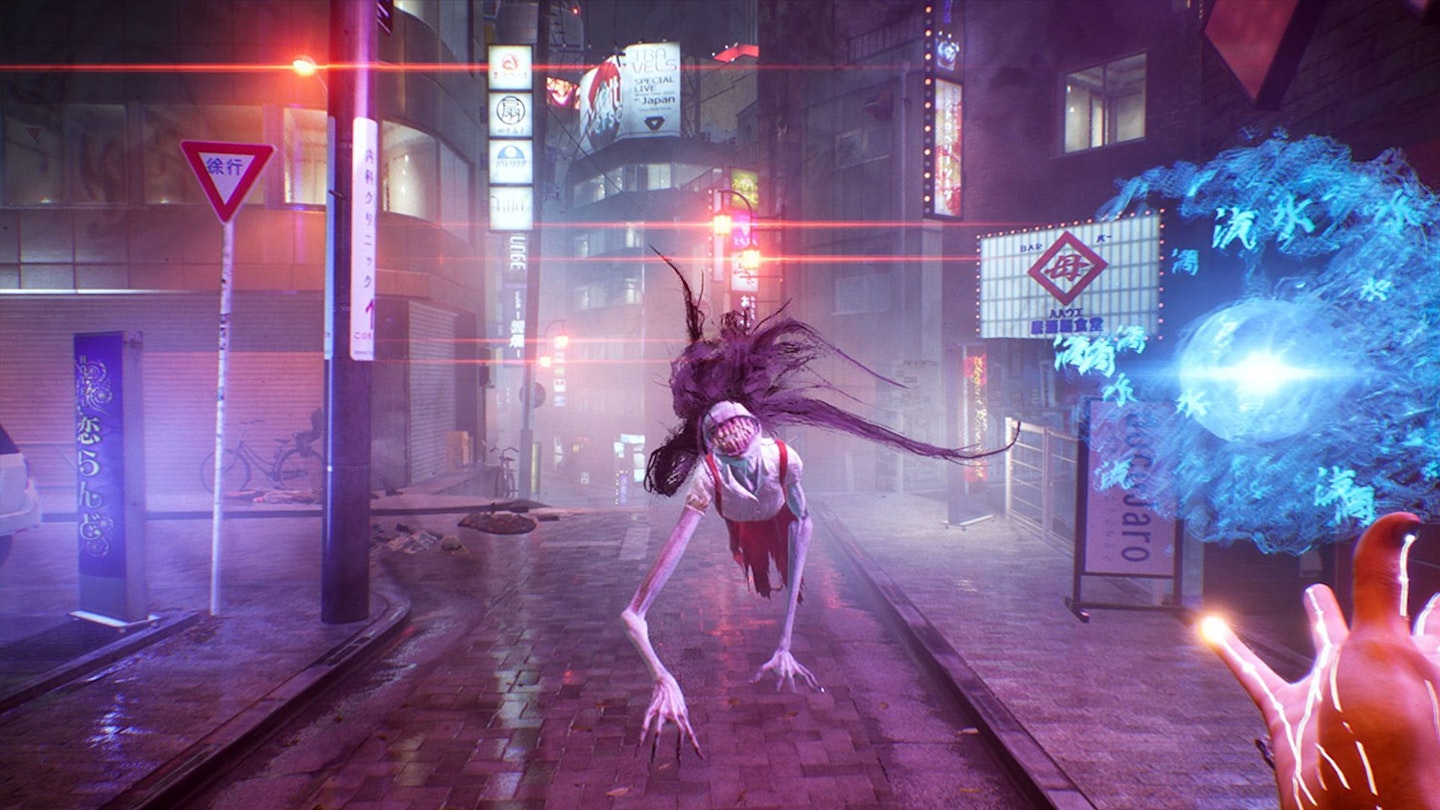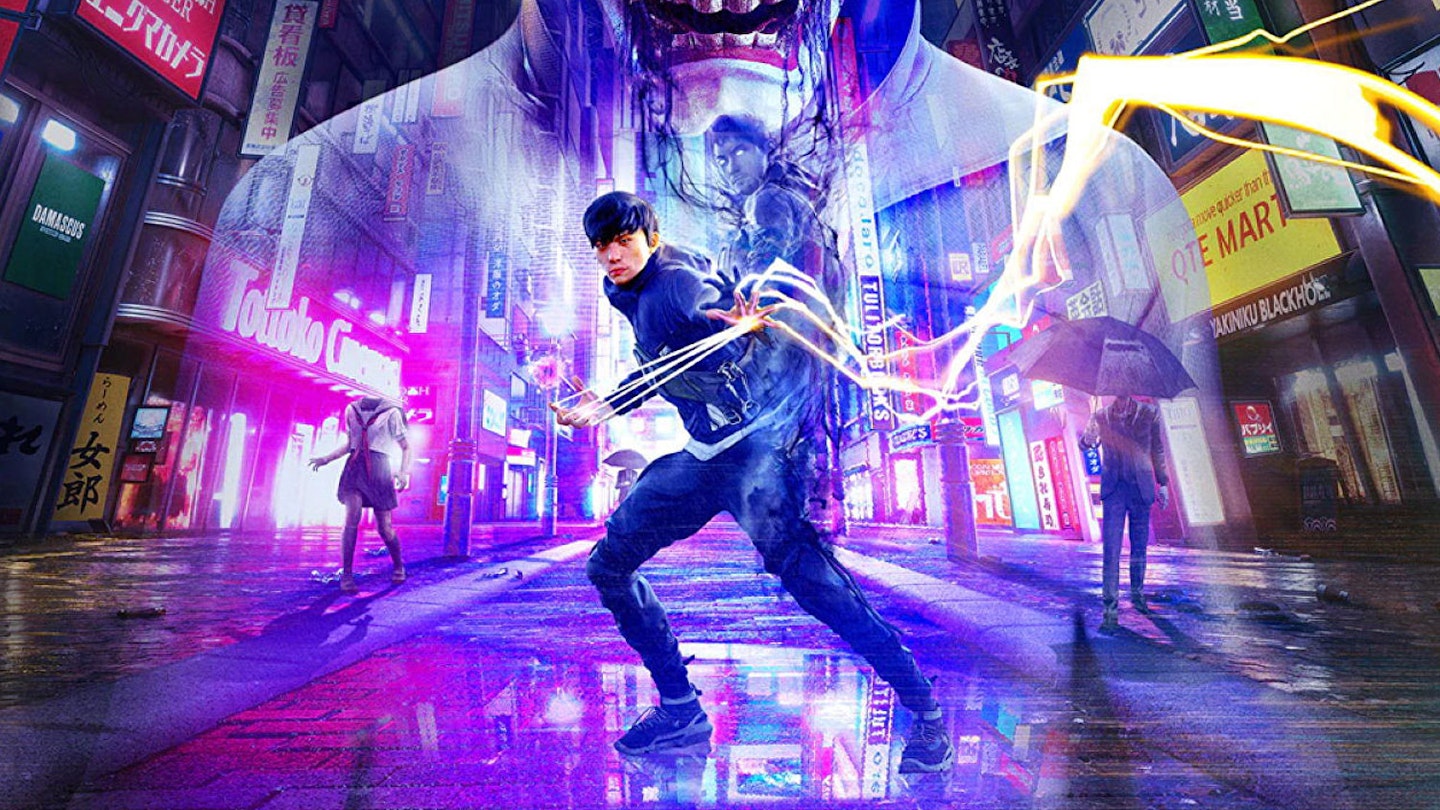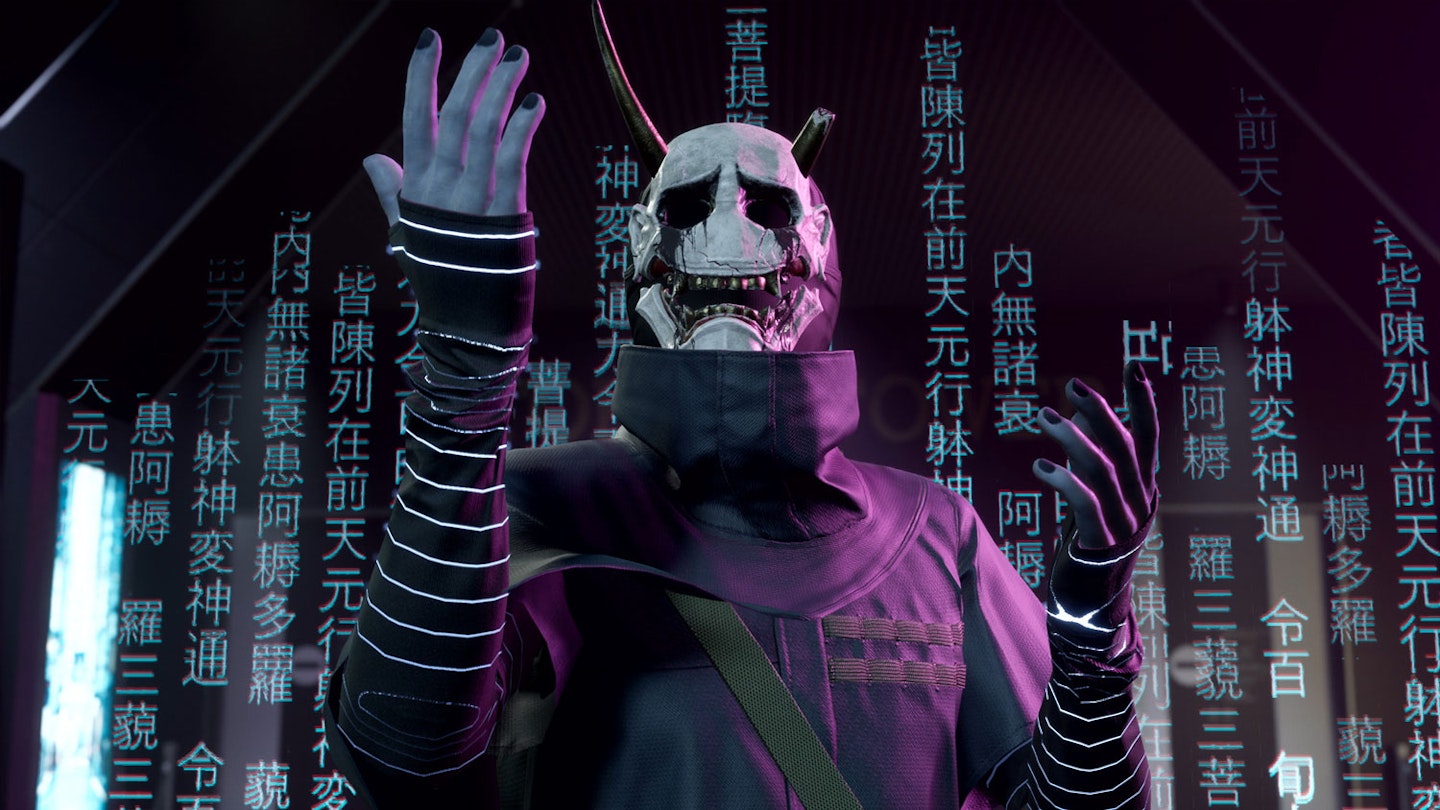Format: PS5, PC
Developer Tango Gameworks has built itself a reputation for grisly horror with its previous work on The Evil Within series, and at a glance, Ghostwire: Tokyo appears to be a return to that particular well. A mysterious event has seen Tokyo’s living inhabitants raptured away, leaving only juddering undead remnants called “Visitors” in their wake, and a lone survivor out to investigate what’s happened.
The brand of horror here, however, is more of a slow-burn, supernatural ilk that taps into Japanese mythology and folklore, rather than trading in jump scares or mind-warping terror, and it’s stronger for it. Traversing Tokyo and encountering the mischievous Yokai and shape-shifting Tanuki in-between battling hideous ghostly figures on rain-slicked streets creates a unique feel for the game; think Studio Ghibli meets the J-horror oeuvre of Hideo Nakata.

Ghostwire follows Akito, that aforementioned survivor, who finds himself body-sharing with a spirit detective who only identifies himself as ‘KK’. The partial-possession offers a few bonuses though, including amongst them the gift of ‘Ethereal Weaving’, casting elemental spells and spiritual seals using hand gestures, Spectral Vision to reveal or track hidden objects and creatures, and the ability to latch onto Tengu demons flying overhead to catapult yourself into the air and explore Tokyo vertically as well as on the ground. These and other skills will come in handy as players hunt down a mysterious man in a Hannya mask – seemingly responsible for what’s happened to Tokyo, and also behind the kidnapping of Akito’s sister.
Played first-person, *Ghostwire: Tokyo* often feels like a mix of open world action RPG and parkour adventure.
Played first-person, Ghostwire: Tokyo often feels like a mix of open world action RPG and parkour adventure – Skyrim with a Japanese twist (fitting, given publisher Bethesda is behind both), and a side of Dying Light. Akito’s movements are far from the speedy flow of the latter, though, but clambering up and around the empty Tokyo helps cement both the scale and detail of the city that Tango Gameworks has so lovingly created here. That scale slowly expands too, with Akito clearing a hellish fog from the city as he explores and purifies Torii gates found at shrines across Tokyo.
While the thrust of the narrative is on Akito and KK’s quest, Ghostwire’s Tokyo is packed full of smaller stories scattered among its streets and tucked into its back alleys. Floating spirits, which can be collected by Akito in paper dolls called katashiro before releasing them, will recall their last actions in life, hinting at their fates. Other ghosts will give out side missions, usually tied to their unfinished tasks in life. They all add depth to the game’s lonely world, and crafting an overriding theme of regret and loss.

Beyond the lingering spirits trapped in the vices of their life – a hoarder whose greed has created a literal black hole in the afterlife, for instance – many of the Visitors Akito will be fighting appear as corrupted visions of modern life. Rain Walkers are ghoulish salarymen, stripped of all features, wandering the streets in office attire with broken umbrellas; Students of Misery are said to be the ghosts born from anxieties of young people with only hazy futures; Lamentations are the remnants of those who drowned in isolation and loneliness. They all form a through-line that seems to be a commentary on the pressures of society, which again adds greatly to the game’s tone and feel.
Exploring this almost ethereal vision of Tokyo is a delight.
However, combat against the Visitors feels like a casualty to the first-person presentation. Enemies roam the streets largely undisturbed until they notice Akito – which provides a degree of stealth mechanics, allowing players to sneak up behind foes and dispatch them instantly – but once detected, battles largely feel like a basic shooting gallery. Strafing Visitors, firing off Ethereal Weaving blasts and dodging attacks will see players through most encounters, with only diminishing spiritual ‘ammo’ leading to moments of mild despair.
Occasional encounters where Visitors try to cage and destroy innocent spirits apply some urgency, requiring you dispatch enemies before their victims are wiped from existence, but once Akito’s skills are sufficiently levelled up, even these battles aren’t too trying. It’s telling that Akito will earn more experience from capturing and releasing spirits with katashiro than he does from combat in Ghostwire - fighting almost feels like an afterthought.
Yet even if it is, it doesn’t take much away from a game that proves hugely engaging in almost every other respect. Exploring this almost ethereal vision of Tokyo is a delight, one made all the more enjoyable by the gentle pace at which the city is revealed through purification, providing more nooks and crannies to investigate and the world-building is top notch. PS5 players get an extra layer of immersion too, with some fantastic audio effects pushed out to the DualSense controller’s speaker.
What it lack on the action front, Ghostwire: Tokyo more than makes up for in every other department, making this a promising first entry for a brand new property.
